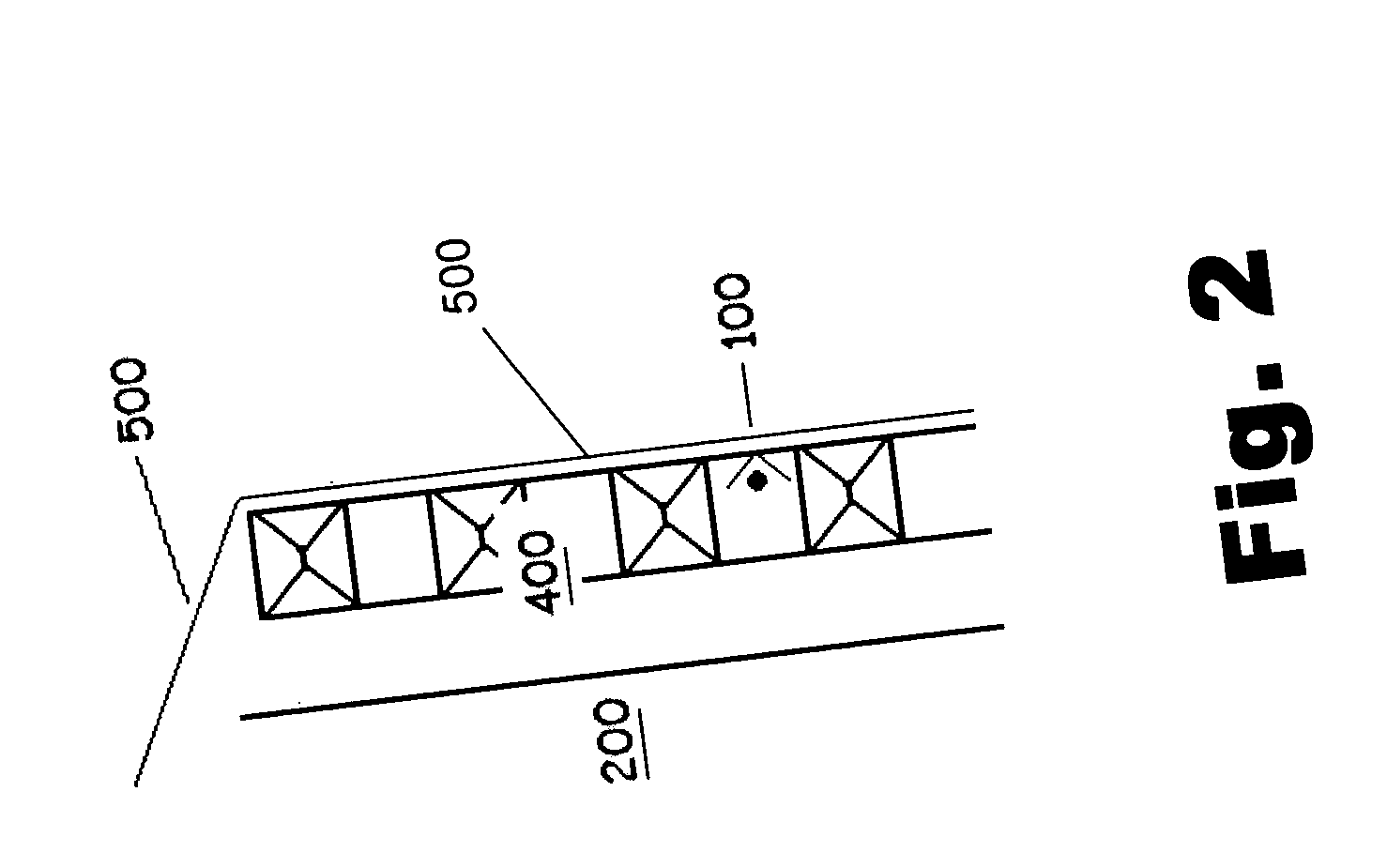Low-intensity infrared heating
a technology of infrared heating and low intensity, which is applied in the field of low intensity infrared heating, can solve the problems of large amount of propane consumed, high cost, and high cost of propane blowers, and achieves the effects of reducing the cost of refueling, monitoring and refueling, and improving the efficiency of the heating
- Summary
- Abstract
- Description
- Claims
- Application Information
AI Technical Summary
Benefits of technology
Problems solved by technology
Method used
Image
Examples
Embodiment Construction
[0021] Heat may be transferred by three fundamentally distinct mechanisms: conduction, convection, and radiation. Conduction is the transfer of heat from a heat source in direct contact with the object to be heated, or from one point to another within the object, in response to spatial temperature gradients. Convection is the transfer of heat from the heat source to the object being heated via a fluid medium such as air. In this case, heat transport occurs as the air moves. Radiation is the transfer of heat via electromagnetic radiation between the heat source and the object to be heated. Electromagnetic energy is emitted by all bodies above −273° C., or absolute zero, and is characterized according to wavelength. In order of increasing wavelength, these categories include gamma rays, X-rays, ultraviolet, visible light, infrared, microwave, and radio frequencies. Among these, infrared waves, which are sometimes called heat waves, have wavelengths ranging from the longest wavelength ...
PUM
 Login to View More
Login to View More Abstract
Description
Claims
Application Information
 Login to View More
Login to View More - R&D
- Intellectual Property
- Life Sciences
- Materials
- Tech Scout
- Unparalleled Data Quality
- Higher Quality Content
- 60% Fewer Hallucinations
Browse by: Latest US Patents, China's latest patents, Technical Efficacy Thesaurus, Application Domain, Technology Topic, Popular Technical Reports.
© 2025 PatSnap. All rights reserved.Legal|Privacy policy|Modern Slavery Act Transparency Statement|Sitemap|About US| Contact US: help@patsnap.com



